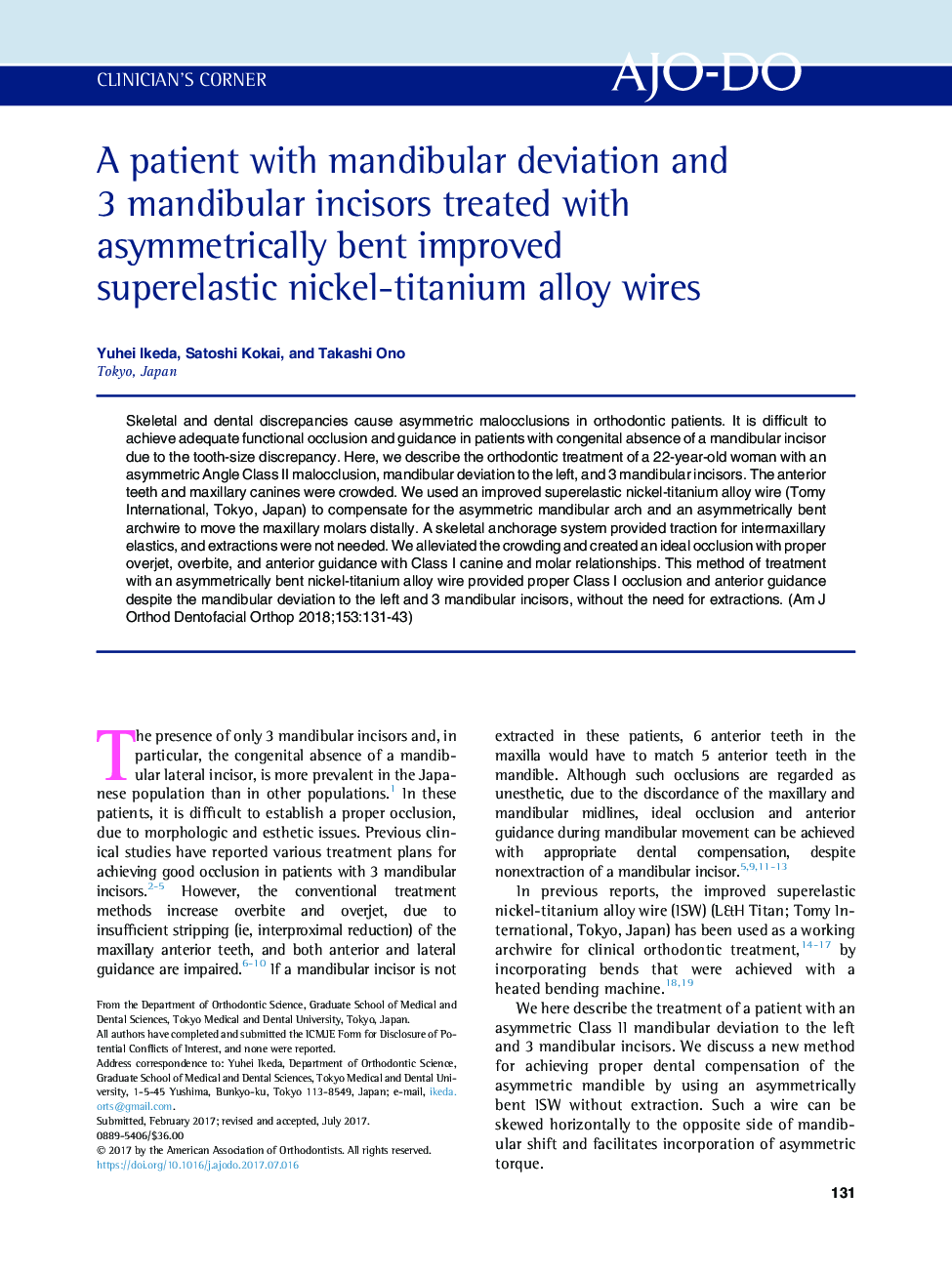| Article ID | Journal | Published Year | Pages | File Type |
|---|---|---|---|---|
| 8696248 | American Journal of Orthodontics and Dentofacial Orthopedics | 2018 | 13 Pages |
Abstract
Skeletal and dental discrepancies cause asymmetric malocclusions in orthodontic patients. It is difficult to achieve adequate functional occlusion and guidance in patients with congenital absence of a mandibular incisor due to the tooth-size discrepancy. Here, we describe the orthodontic treatment of a 22-year-old woman with an asymmetric Angle Class II malocclusion, mandibular deviation to the left, and 3 mandibular incisors. The anterior teeth and maxillary canines were crowded. We used an improved superelastic nickel-titanium alloy wire (Tomy International, Tokyo, Japan) to compensate for the asymmetric mandibular arch and an asymmetrically bent archwire to move the maxillary molars distally. A skeletal anchorage system provided traction for intermaxillary elastics, and extractions were not needed. We alleviated the crowding and created an ideal occlusion with proper overjet, overbite, and anterior guidance with Class I canine and molar relationships. This method of treatment with an asymmetrically bent nickel-titanium alloy wire provided proper Class I occlusion and anterior guidance despite the mandibular deviation to the left and 3 mandibular incisors, without the need for extractions.
Related Topics
Health Sciences
Medicine and Dentistry
Dentistry, Oral Surgery and Medicine
Authors
Yuhei Ikeda, Satoshi Kokai, Takashi Ono,
